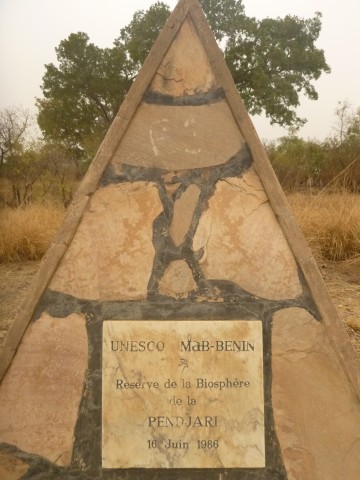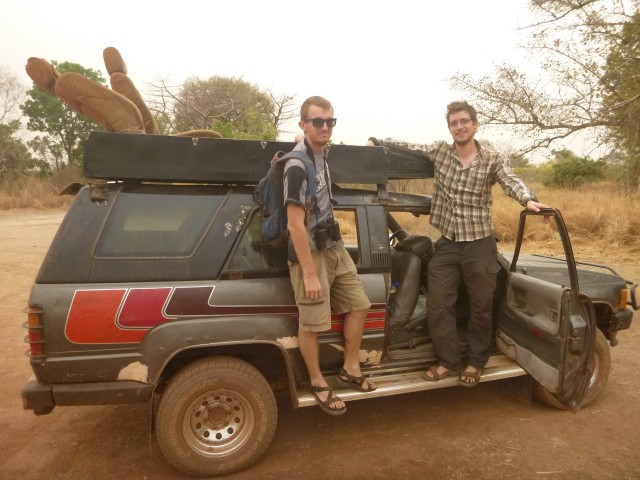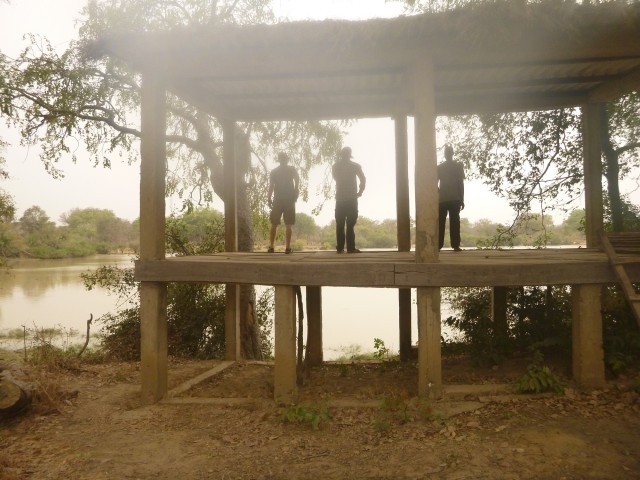The author en route to the heart of Pendjai. Image by Mark Hanss.
This March I took time off from volunteering in Togo to visit Pendjari National Park in neighboring Benin. West Africa isn’t nortoriously renowned for its wild animal life. Western visitors in search of the safari experience flock to East and South Africa to view the Great Migration and iconic parks like the Serengeti and Kruger. However, West Africa does have some wildlife-viewing opportunities, and Pendjari is hailed by several guidebooks as the best in the region. Don’t expect luxury or epic-proportion panoramas here, but if you find yourself in West Africa, Pendjari is a worthwhile detour for a budget safari.
Expectations
Pendjari National Park is located in northwestern Benin. I was surprised by the discontent I read in some online reviews of the park. Undoubtedly, my perspective of what constitutes fancy has been re-calibrated by living in a rural West African village for the past two years, but many reviewers seemed to have unrealistic exceptions about things like road quality and menu selection.
Pendjari, and Benin in general, is less expensive than options in East Africa. If you are making a first visit to Africa and you’re booking a once-in-a-lifetime safari, you might want to research cheap options in a region with better-known destinations. But if you are on a shoestring budget, want to see a region you’ve never visited, and truly don’t mind the absence of coiffed tourist marketing, I can recommend Pendjari.

Planning
Pendjari does not experience a high volume of tourist traffic, a positive selling point while out viewing animals but one that proved annoying when we were trying to make travel arrangements en route. As recommended by our guide book, we stopped by the Tata Samba hotel in Natitingou to arrange transport. If you come into Benin having just exchanged euros, pounds, American or Australian dollars, this might be a viable option, but as volunteers on a living stipend of local currency, we decided to slash the trip budget further by taking public transportation to Tanguieta, the town directly outside the park.
Securing a knowledgeable guide is key to having an enjoyable experience. It’s easy to ask any local driver to take you to a guide. You might get dropped off at someone’s house or boutique, but even if you meet these guides informally, they can be verified by official park identity cards marked as class A, B, or C. Go for a guide with class A, the highest class, and don’t be afraid of a little friendly price negotiation. Do your research to get an idea of what is reasonable. Park entrance is 10,000 Central African Francs (CFA), or about $20 USD per person, plus a 3,000 CFA ($6.00 USD) entrance fee per vehicle. In addition, budget for gas, the guide’s daily rate, food, hotel, and a tip for the guide.

Money-Saving Tips
Once in Tanguieta, we took moto-taxis for a harrowing ride out to a campground at the edge of the park. It is an hour-long drive through the park’s buffer zone, so by sleeping at the campground, we missed the morning watering-hole activity, but it was considerably cheaper. In part because the campground features waterfalls which we swam in, we agreed it was worth it. However, if you want an early start, you’ll have to sleep at the park hotel or convince (AKA pay) your guide to get going at unearthly pre-dawn hours. This is also obligatory if you want to go on a popular night-safari drive.
Tanguieta is the last stop for getting supplies. I recommend bringing your own peanut butter and stocking up on bread, bananas, and lots of water if you want to avoid paying the inflated prices at the park restaurant. If you prefer a hot meal and convenience, expect to pay about $12 USD for a plate of spaghetti and a side dish, which would cost $1 USD outside the park.
Dividing the shared costs between the three of us made for a more-than-reasonable cost, and as many as five passengers could have been comfortably accommodated in the vehicle we hired. Much to the consternation of our guide, we also limited our experience to one day-trip.
The Experience
On safari, we saw crocodiles, warthogs, baboons, hippopotami, gazelle, antelopes, a few elephants, and a myriad of spectacular birds. (No big cats, much to my disappointment, but they are fairly rare and more likely to be sighted on a night drive.) The park was larger than I expected, but limited to a few designated Jeep circuits and a few viewing platforms.

In short, you can further save money on your budget safari by taking public transportation, going in a group of three to five people, packing your own food and snacks, and sleeping outside the park. Of course, each of these tips comes with a tradeoff of ease and comfort, but choose what works best for you, and get out there to see some animals!
